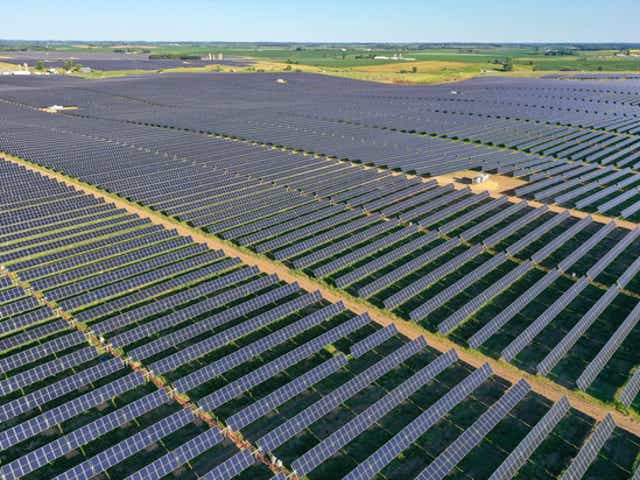As the world grapples with the urgent need to combat climate change, the transition to green energy sources has become a central focus of global efforts. Green energy, including solar, wind, hydro, and other renewables, offers not only environmental benefits but also economic advantages. In this blog post, we’ll delve into the economics of green energy, helping you understand the costs, savings, and long-term financial benefits associated with this transformative shift in the energy landscape.
The Initial Costs of Green Energy
One of the common misconceptions about green energy is that it’s prohibitively expensive to implement. While it’s true that there are upfront costs involved, it’s essential to consider the full picture, including the long-term savings and benefits. Let’s break down the initial costs of various green energy technologies:
1. Solar Power
a. Solar Panels: The cost of solar panels has declined significantly over the years. On average, residential solar panels can range from $10,000 to $30,000, depending on the size and efficiency of the system.
b. Installation: Installation costs can vary based on factors like location and complexity. However, federal and state incentives, along with tax credits, can offset a significant portion of these costs.
2. Wind Power
a. Turbines: Small residential wind turbines can cost between $5,000 and $22,000, while larger systems for commercial or industrial use can range from $100,000 to $500,000 or more.
b. Installation: Installation costs can add another 10-30% to the total cost of a wind power system. However, like solar, wind energy projects often qualify for various incentives.
3. Hydropower
a. Equipment: The cost of hydroelectric equipment varies widely depending on the size and type of the system. Small-scale hydro systems can cost anywhere from $1,000 to $20,000, while large-scale projects can reach millions of dollars.
b. Infrastructure: Building the necessary infrastructure, such as dams or channels, can add substantially to the overall cost of hydropower projects.
4. Geothermal Power
a. Ground Source Heat Pumps: Installing a ground source heat pump for geothermal heating and cooling can range from $3,000 to $15,000 for residential use. Commercial or industrial systems can cost more.
b. Drilling: If geothermal heat exchange requires drilling boreholes, the cost can increase significantly, particularly for deep drilling.

The Savings and Benefits of Green Energy
While the initial costs of green energy systems can be a deterrent for some, it’s essential to consider the substantial savings and benefits that come with these technologies:
1. Reduced Energy Bills
Green energy systems, particularly solar and wind, generate electricity that can offset or eliminate your dependence on traditional energy sources. As a result, your energy bills can significantly decrease or even disappear entirely.
2. Return on Investment (ROI)
Green energy systems often have a relatively short payback period. Depending on factors like system size, location, and incentives, you can recoup your initial investment within a few years. After that, the energy generated becomes essentially free.
3. Tax Incentives and Credits
Federal and state governments offer tax incentives and credits to encourage the adoption of green energy. These incentives can significantly reduce the upfront costs of installation.
4. Increased Property Value
Homes and properties equipped with green energy systems tend to have higher resale values. Buyers are often willing to pay more for a property with lower energy costs and environmental benefits.
5. Environmental Benefits
Beyond financial savings, green energy contributes to a cleaner and more sustainable environment. Reduced carbon emissions, improved air quality, and conservation of natural resources are among the many ecological benefits.
6. Energy Independence
Green energy systems provide a degree of energy independence. By generating your electricity, you are less vulnerable to energy price fluctuations and power outages.
7. Job Creation
The green energy sector is a significant source of job creation. Investments in renewable energy projects lead to the employment of a diverse range of professionals, from engineers and technicians to installers and maintenance workers.
Comparing the Costs of Green Energy Sources
To get a better understanding of the economics of green energy, it’s helpful to compare the costs of different renewable sources. Here’s a brief overview:
1. Solar vs. Wind
Solar and wind power are two of the most accessible and widely adopted green energy sources. While solar panels have slightly higher upfront costs than residential wind turbines, solar systems typically have lower ongoing maintenance costs and are easier to install. Wind turbines may have lower ongoing operational costs for larger-scale projects.
2. Solar vs. Hydropower
Solar power systems are generally less expensive to install than hydropower systems, particularly when considering the costs of building and maintaining infrastructure for hydropower. However, hydropower systems can produce more consistent energy output in regions with ample water resources.
3. Geothermal vs. Solar
Geothermal systems tend to have higher upfront costs due to the drilling and excavation required for ground source heat pumps. However, they can offer substantial long-term savings through reduced heating and cooling costs. Solar power systems, on the other hand, are typically less expensive to install but may not provide the same level of energy efficiency for heating and cooling.
Government Support and Incentives
Government support and incentives play a significant role in making green energy more accessible and cost-effective. Here are some key programs:
- Federal Investment Tax Credit (ITC): The federal ITC provides a tax credit of up to 26% of the cost of installing a solar energy system, making solar more affordable for homeowners and businesses.
- Production Tax Credit (PTC): The PTC provides a tax credit for the production of renewable energy, particularly wind energy. It encourages investment in wind power projects.
- Renewable Portfolio Standards (RPS): Many states have RPS policies that mandate a certain percentage of energy generation come from renewable sources. This drives investment in green energy.
- Net Metering: Net metering allows homeowners and businesses to sell excess electricity generated by their green energy systems back to the grid, providing financial incentives and reducing payback periods.
Conclusion
The economics of green energy are increasingly favorable, with decreasing upfront costs, attractive incentives, and substantial long-term savings. Green energy not only benefits the environment but also offers financial advantages, including reduced energy bills, tax incentives, increased property values, and energy independence which you can find the answer to here. As technology continues to advance and economies of scale drive down costs, green energy is becoming an increasingly viable and financially sound choice for individuals and businesses alike. Making the switch to green energy isn’t just an environmentally responsible decision; it’s a financially savvy one too.






